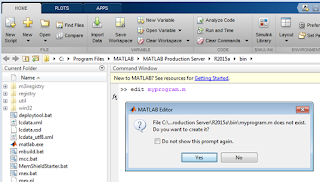Types of DC Motor
D.C. generators are classified according to the method of their field excitation. These groupings are:- Permanent magnet dc generators, where a permanent magnet is used to establish flux in the magnetic circuit.
- Separately-excited generators, where the field winding is connected to a source of supply other than the armature of its own machine.
- Self-excited generators, where the field winding receives its supply from the armature of its own machine, and which are sub-divided into
Characteristics
(a) Separately-excited generator
 The two principal generator characteristics are the generated voltage/field current characteristics, called the open-circuit characteristic and the terminal voltage/load current characteristic, called the load characteristic. Typical separately-excited generator characteristics are shown in Figure.
The two principal generator characteristics are the generated voltage/field current characteristics, called the open-circuit characteristic and the terminal voltage/load current characteristic, called the load characteristic. Typical separately-excited generator characteristics are shown in Figure.
When a load is connected across the armature terminals, a load current Ia will flow. The terminal voltage V will fall from its open-circuit e.m.f. E due to a volt drop caused by current flowing through the armature resistance, shown as Ra.
Terminal voltage,
V = E − IaRa
(b) Shunt wound generator
In a shunt wound generator the field winding is connected in parallel with the armature as shown in Figure. The field winding has a relatively high resistance and therefore the current carried is only a fraction of the armature current.
Terminal voltage, V = E - IaRa
Ia = If + I from Kirchhoff’s current law, where,
Ia = armature current,
and I = load current
As the load current on a generator having constant field current and running at constant speed increases, the value of armature current increases, hence the armature volt drop, IaRa increases. The generated voltage E is larger than the terminal voltage V and the voltage equation for the armature circuit is V = E - IaRa. Since E is constant, V decreases with increasing load.
(c) Series-wound generator
In the series-wound generator the field winding is connected in series with the armature
 Thus E is proportional to flux. For values of current below magnetic saturation, the flux is proportional to the current, hence E α I. For values of current above those required for magnetic saturation, the generated e.m.f. is approximately constant. The values of field resistance and armature resistance in a series wound machine are small; hence the terminal voltage V is very nearly equal to E.
Thus E is proportional to flux. For values of current below magnetic saturation, the flux is proportional to the current, hence E α I. For values of current above those required for magnetic saturation, the generated e.m.f. is approximately constant. The values of field resistance and armature resistance in a series wound machine are small; hence the terminal voltage V is very nearly equal to E.
In a series-wound generator, the field winding is in series with the armature and it is not possible to have a value of field current when the terminals are open circuited, thus it is not possible to obtain an open-circuit characteristic.
(d) Compound-wound generator
In the compound-wound generator two methods of connection are used, both having a mixture of shunt and series winding, designed to combine the advantages of each. Fig.(a) shows what is termed a long-shunt compound generator, and Fig.(b) shows a short-shunt compound generator. The latter is the most generally used form of D.C. generator.
In cumulative-compound machines the magnetic flux produced by the series and shunt fields are additive. Included in this group are over-compounded, level-compounded and under-compounded machines – the degree of compounding obtained depending on the number of turns of wire on the series winding.
















0 comments:
Post a Comment